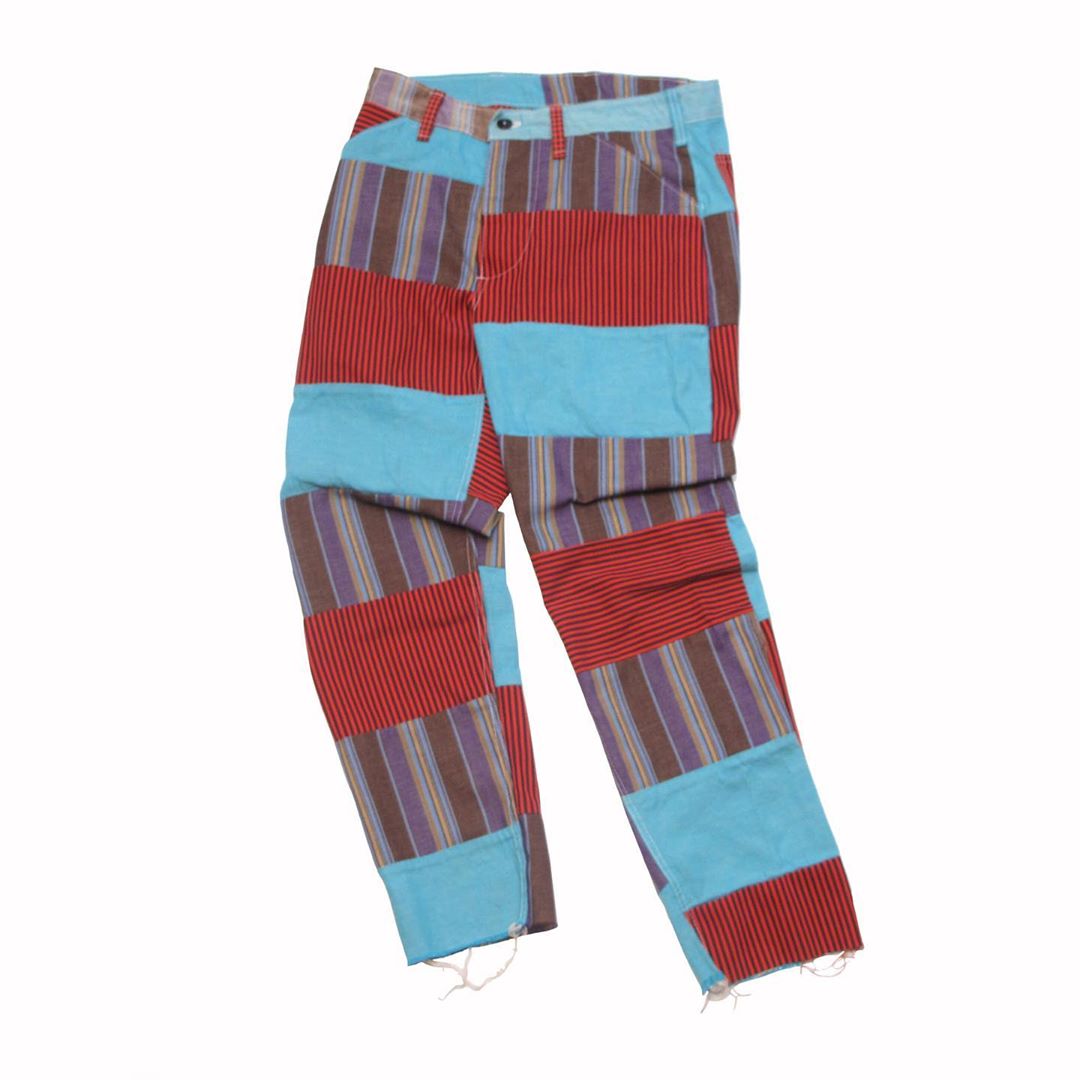
Pattern mixing–all in one garment. From Pentimento.
George Frazier’s classic essay “The Art of Wearing Clothes” is at its heart an argument in favor of conservative clothing. Anecdote after anecdote indicate the folly of flashy dress — Sir Walter Raleigh was a fool in a “doublet finely flowered,” Lord Buckingham literally dripped diamonds, Prince von Kaunitz needed four wig attendants. Frazier sets these men up to shine a light on the moment it all changed — for the better, in his view — with the arrival of Beau Brummel. The O.G. dandy cared deeply about clothing and allegedly changed three times a day, but he made showing off a far less showy affair. Post-Brummel, the desired state of men’s dress was “tasteful simplicity,” restraint, and “studied carelessness.”
To an extent, Frazier (or at least his writing) is the Brummel off our time. Whether they were influential or just prescient, his essays define modern style as subtle, personal, and within pretty traditional boundaries. Esquire published “The Art of Wearing Clothes” in 1960, on the verge of cultural (and fashion) upheaval. All of the style icons illustrated with the essay are depicted tailoring, and for the most part they’re very serious men: businessmen, politicians, plus Fred Astaire. What Frazier, a jazz critic, really added with his writing was an attempt to define cool.
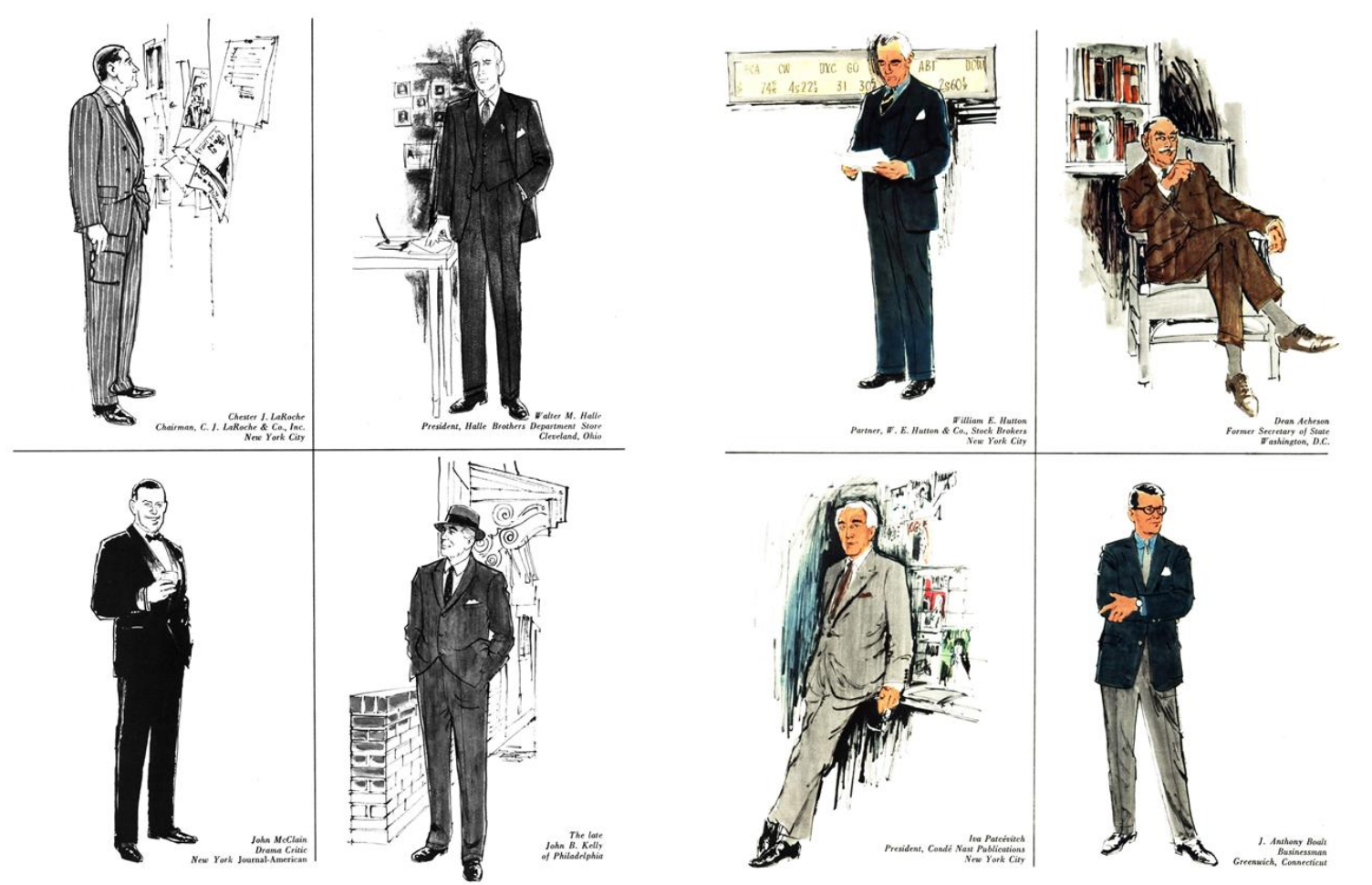
Esquire’s best dressed men, 1960.
Frazier’s (and Brummel’s) pronouncements resonate today. Some of the snobbishness about getting the right clothes from the right places, and just being handsome and rich, we’ve begun to leave behind, but many men (including me!) still strive to dress subtly and within a prescribed set of rules, and to look like we care, but not too much. The average guy may not have read back issues of Esquire (or Put This On), but he knows that society generally wants him to look effortlessly cool.
Author Alexandra Rowland has a different perspective on this drive to fit in. In a dazzling rant last year on Twitter, they wrote:
BEAU FUCKING BRUMMEL… He is the *inventor* of the reason that many men today feel self-conscious in anything eye-catching or unique. Shapeless hoodies and jeans or cargo pants for everybody! A suit that looks exactly like everyone else’s! So we have THIS GODDAMN ASSHOLE swanning into Regency society, making everyone feel shitty about themselves unless they conform exactly to his standards. It is an artificial construction of casualness — “look exactly like everyone else, don’t stand out,” but to do that WELL, it requires you to put yourself at the ABSOLUTE CENTER OF YOUR ENTIRE UNIVERSE. Boys. My boys. What would be fun to wear? What would make you feel cute? Brocade waistcoat? Do it. Weird pants? Do it. Bright colors? PLEASE DO IT, Y’ALL ARE SO CUTE WHEN YOU WEAR COLORS.
Which brings me to my point: weird pants. Let’s wear them more. Most of the pattern and color in men’s clothing gets covered up — we buy bright shirts and silk ties but then hide them under gray tailored jackets; you only get a little window there to shine. We are a little more flexible with casual outerwear or graphic tshirts, which shift in and out of vogue. I have some weird tshirts, for sure.
But the overwhelming pants palette is neutral: indigo, gray, khaki, olive. Downright Brummellian. Some tartans, some cords, and the occasional go-to-hell pattern or embroidered animal, which is loud, sure, but acceptable at country clubs; it’s not weird. When I want to try something new with pants, it’s usually a slight shape/cut change, or adding details like a pocket here or a tab waist there. We’re picky about trousers — a classic menswear tale is that the Duke of Windsor had his jackets made in England but his trousers in America, because he preferred American pants. I don’t like to cite the Duke, but me too, man.
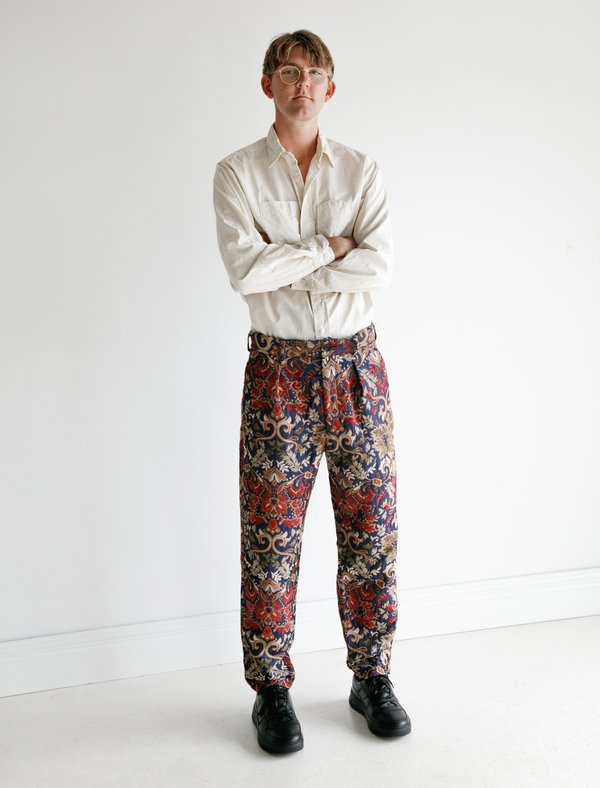
Engineered Garments pants at Neighbor.
It makes sense that guys want versatile pants and get attached to particular cuts. Pants are one of the hardest fits to get right and when you’re taking chances on shirts and jackets, it’s helpful to hold the pants as a static variable. But once you move a bit beyond a denim wardrobe for casual pants, there are a lot of choices — mixed texture, bold colors, patterns, and even prints.
The safest way to bring weird pants into the fold is to keep the rest of the outfit relatively neutral–gray, white, or black shirts or outerwear. These are for sure not for business wear, so it’s best to keep the character of the other pieces relaxed, and avoiding anything too tailored or business-y. Weird pants can fit well with workwear or milsurp style, which is often neutral anyway, and the right sort of out-of-office vibe. Knits, too, should be on the rough-hewn side rather than finer, sleeker finishes. For shoes, plain leather bluchers strike the right balance, or something non-sneaker but extremely casual, like Clark’s Wallabees, or very simple sneakers.
More than other bold clothing, weird pants require committing to the bit. They’re a risk — a flowered strut in the direction of Sir Walter Raleigh. You’re wearing weird pants. You did it on purpose. There’s a chance you may get asked about them by a would-be Beau Brummel.
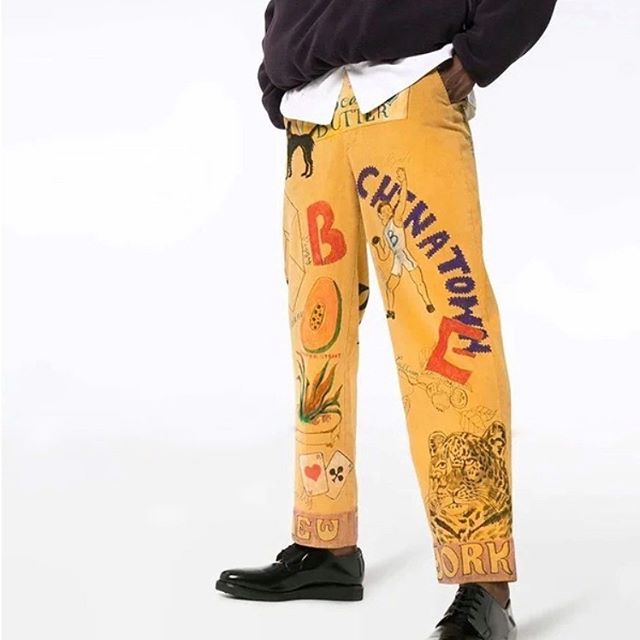
One-off pants from Bode.
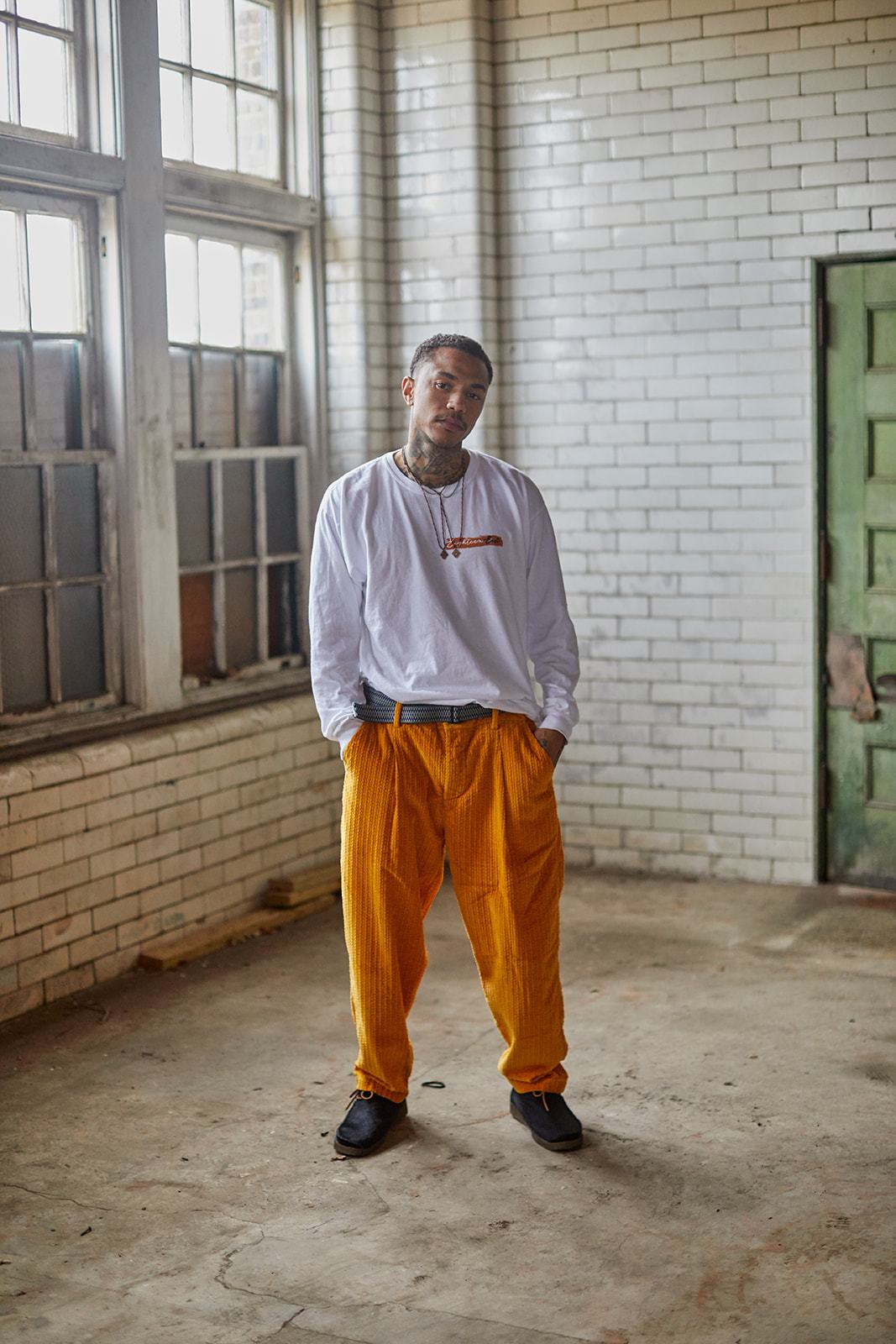
Gold cable cords from 18east.
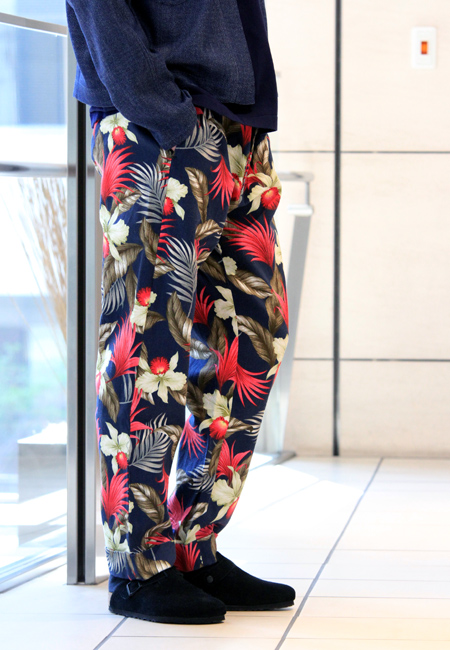
More Engineered Garments, which has been making floral pants on and off for over a decade.







